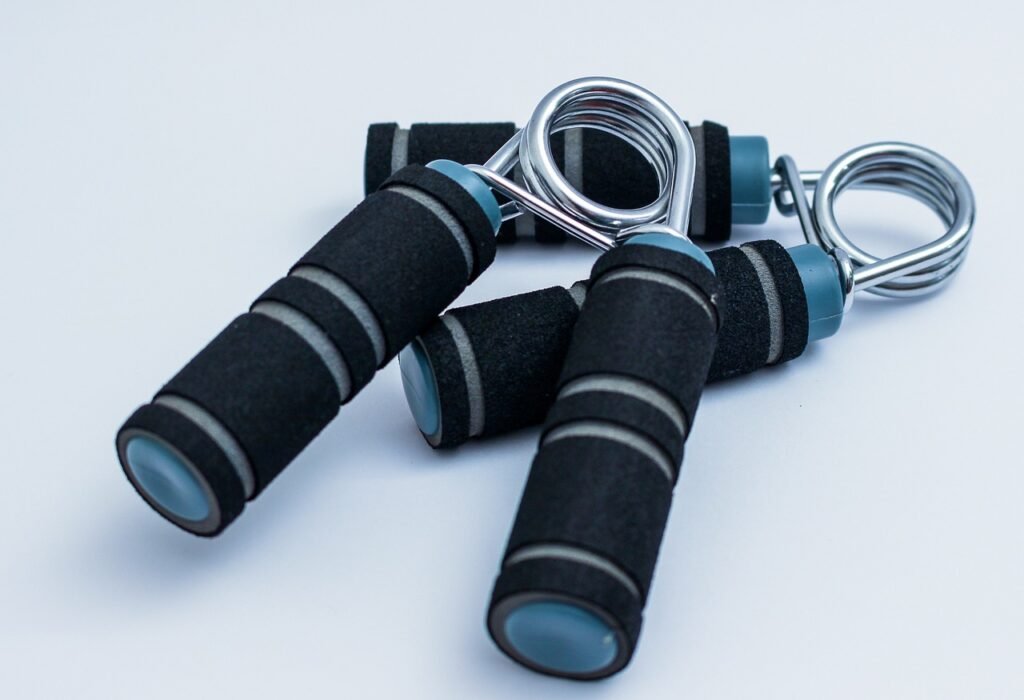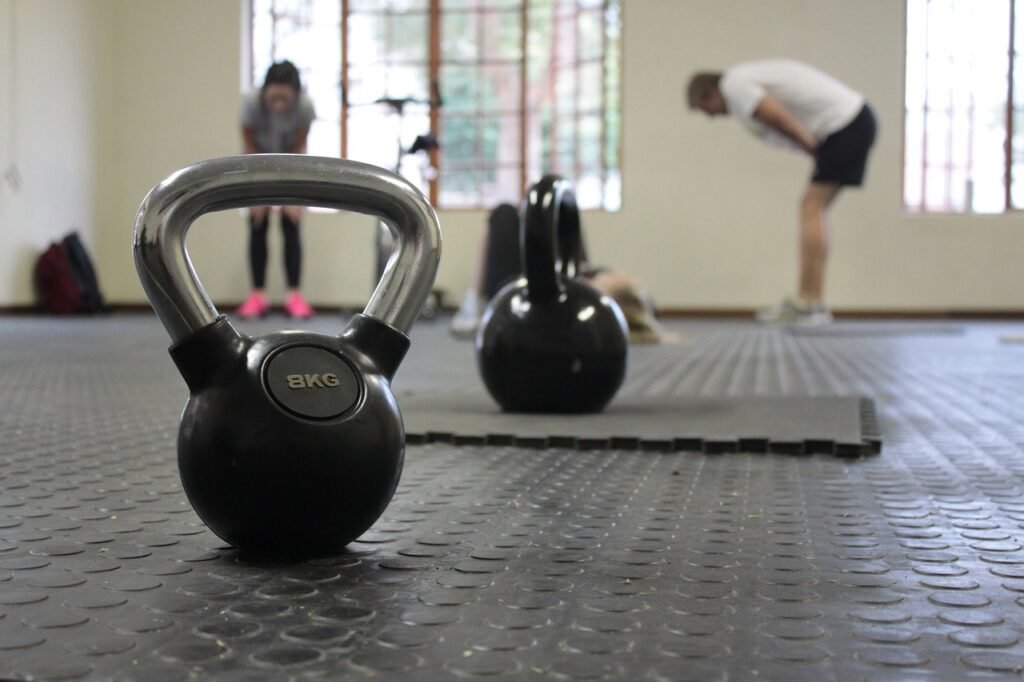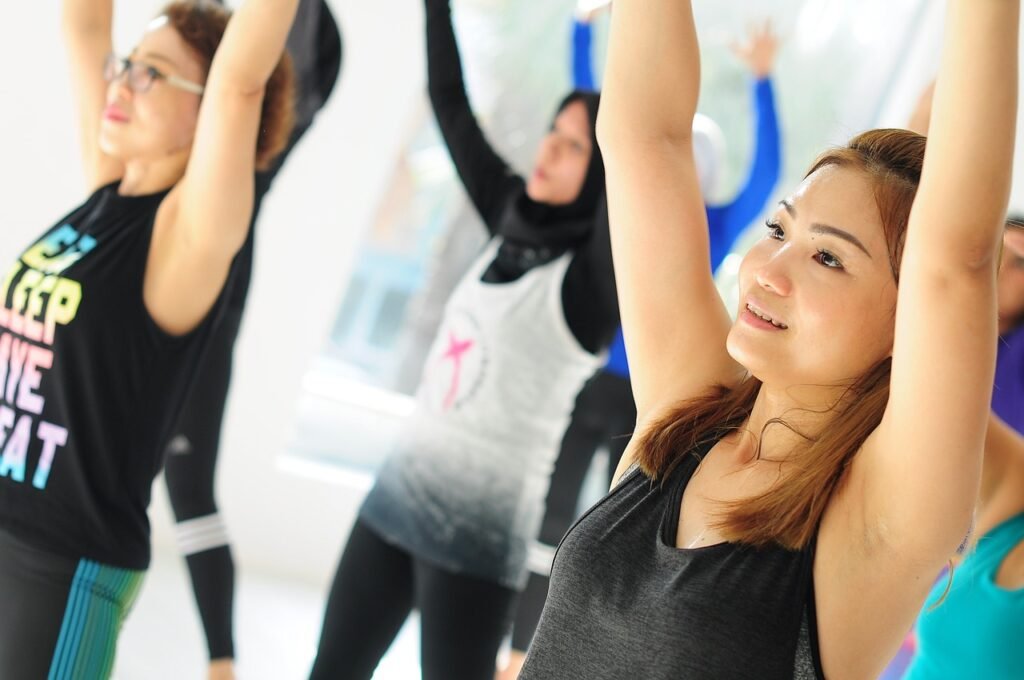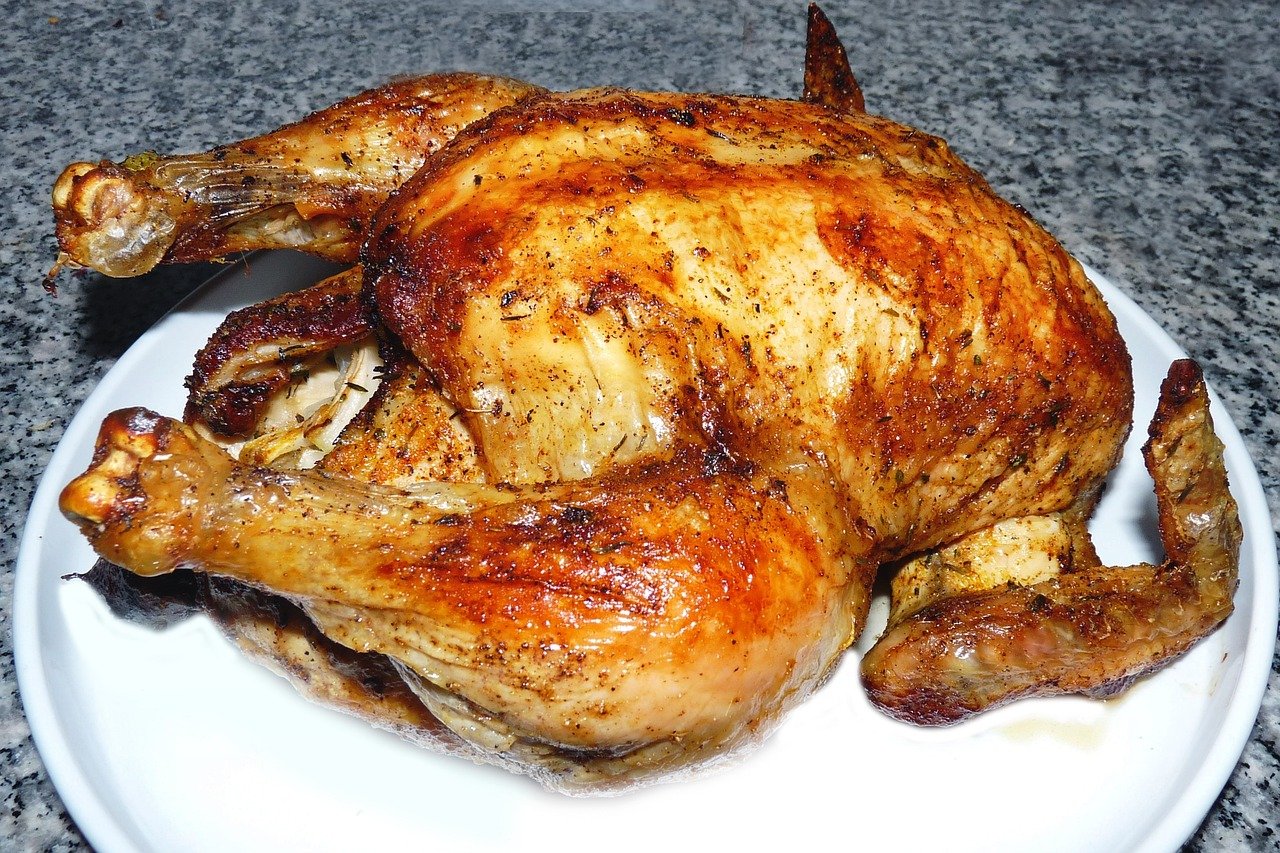How to Make a Calisthenics Workout Plan for Beginners

Introduction to Calisthenics
Calisthenics is a form of exercise that utilizes body weight to build strength, flexibility, and endurance. It is an ideal workout regimen for beginners because it requires no equipment and can be done anywhere. In this guide, we will detail how to create an effective calisthenics workout plan that will set you on the path to fitness success.
Benefits of Calisthenics
Calisthenics offers numerous benefits, including improved cardiovascular health, increased muscle strength, and enhanced flexibility. Additionally, it promotes better body awareness and control, which can enhance performance in other physical activities.
Setting Your Goals
Before diving into your calisthenics workout plan, it’s crucial to set specific, measurable, achievable, relevant, and time-bound (SMART) goals. Determine what you aim to achieve—whether it’s building muscle, losing weight, or improving overall fitness—and set a timeline for these goals.
Understanding Calisthenics Basics
Warm-Up Routine
Begin with 5-10 minutes of light cardio, such as jogging or jumping jacks, followed by dynamic stretches that target major muscle groups. This will increase blood flow and improve flexibility.
Basic Calisthenics Exercises
- Push-Ups: Work on your chest, shoulders, and triceps. Start with standard push-ups and progress to variations like diamond push-ups or wide-arm push-ups as you get stronger.
- Squats: Target your legs and glutes. Begin with bodyweight squats and advance to pistol squats or jump squats.
- Pull-Ups: Focus on your back and biceps. If pull-ups are too challenging initially, use resistance bands or perform inverted rows.
- Planks: Strengthen your core. Begin with a basic plank and progress to side planks or plank variations with leg lifts.
- Dips: Work on your triceps, chest, and shoulders. Start with bench dips and advance to parallel bar dips.
Structuring Your Workout Plan

Frequency and Duration
For beginners, aim to perform calisthenics workouts 3-4 times a week. Each session should last between 30-45 minutes, including warm-up and cool-down periods.
Sample Weekly Plan
Day 1: Full Body Workout
- Warm-Up: 10 minutes of light cardio
- Push-Ups: 3 sets of 10-15 reps
- Squats: 3 sets of 15-20 reps
- Pull-Ups: 3 sets of 5-10 reps
- Planks: 3 sets of 30-60 seconds
- Dips: 3 sets of 10-15 reps
- Cool-Down: 5 minutes of stretching
Day 2: Rest or Light Activity
- Light activities, such as walking or yoga, can help with rehabilitation.
Day 3: Upper Body Focus
- Warm-Up: 10 minutes of light cardio
- Push-Ups: 3 sets of 15-20 reps
- Pull-Ups: 3 sets of 5-10 reps
- Dips: 3 sets of 10-15 reps
- Planks: 3 sets of 45-60 seconds
- Cool-Down: 5 minutes of stretching
Day 4: Lower Body Focus
- Warm-Up: 10 minutes of light cardio
- Squats: 3 sets of 20-25 reps
- Calf Raises: 3 sets of 20 reps
- Planks: 3 sets of 30-60 seconds
- Cool-Down: 5 minutes of stretching
Day 5: Rest or Light Activity
- Walking or yoga are good examples of gentle activities that might help with rehabilitation.
Day 6: Full Body Workout
- Repeat the Day 1 workout plan with slight variations to keep the body challenged.
Day 7: Rest
- Complete rest to allow full muscle recovery.
Progressing Your Workout
As you become more comfortable with the basic exercises, gradually increase the intensity of your workouts. This can be done by:
- Increasing the number of sets and reps.
- Reducing rest time between sets.
- Incorporating more advanced variations of exercises.
- Adding additional exercises to your routine.
Nutrition and Recovery
Balanced Diet
A well-balanced diet is essential for fueling your workouts and aiding recovery.Eat a variety of entire foods, such as lean proteins, complex carbs, good fats, and enough vegetables and fruit. Maintain hydration by sipping plenty of liquids throughout the day.
Adequate Rest
Rest is crucial for muscle growth and recovery. Ensure you get 7-9 hours of sleep each night and incorporate rest days into your weekly workout plan.
Tracking Your Progress
Keep a workout journal to track your exercises, sets, reps, and how you feel after each session. This will help you identify areas of improvement and adjust your workout plan accordingly. Additionally, taking progress photos can be a great way to visually track your transformation over time.
Staying Motivated
Staying motivated can be challenging, especially for beginners.
- Set short-term and long-term goals.
- Celebrate your achievements, no matter how small.
- Mix up your routine to keep it exciting and prevent boredom.
Conclusion
Creating a calisthenics workout plan for beginners involves understanding the basics, setting achievable goals, and progressively challenging your body. By following this guide, you can develop a strong foundation in calisthenics and work towards achieving your fitness goals.
Common Mistakes to Avoid

Skipping the Warm-Up and Cool-Down
One of the most common mistakes beginners make is neglecting the warm-up and cool-down phases of their workouts. A proper warm-up prepares your muscles for the upcoming exercise, reduces the risk of injury, and enhances performance. Similarly, cooling down helps your body transition back to a resting state and aids in muscle recovery.
Overtraining
While enthusiasm is great, overtraining can lead to burnout and injuries. It’s important to listen to your body and allow adequate rest between workouts. Ensure you have at least one or two rest days per week to give your muscles time to recover and grow stronger.
Poor Form
Take the time to learn the correct technique for each exercise and start with easier variations if necessary. Using a mirror or recording yourself can help you monitor and improve your form.
Inconsistent Training
Consistency is key to progress progress. Stick to your workout plan and gradually increase the intensity and difficulty of your exercises to keep challenging your body.
Advanced Calisthenics Exercises
As you build strength and confidence, you can start incorporating more advanced calisthenics exercises into your routine. These exercises will provide greater challenges and help you continue progressing.
Muscle-Ups
A muscle-up is a combination of a pull-up and a dip. Start by mastering pull-ups and dips before attempting muscle-ups.
Handstand Push-Ups
Handstand push-ups target your shoulders, triceps, and core. Begin by practicing handstands against a wall to build balance and strength. Once comfortable, gradually progress to performing push-ups in the handstand position.
Planche
The planche is an advanced move that requires immense core and shoulder strength. Start with basic planche progressions like tuck planches and gradually work towards a full planche. This exercise demands patience and consistent practice.
Front Lever
The front lever is a challenging exercise that targets your back, core, and shoulders. Begin with tuck front levers and slowly extend your legs as you build strength. Practice consistently to achieve a full front lever.
Incorporating Flexibility Training
Flexibility is an often overlooked aspect of fitness that is crucial for overall performance and injury prevention. Incorporate regular stretching and flexibility exercises into your routine to enhance your range of motion and reduce muscle tightness.
Dynamic Stretching
Include dynamic stretches in your warm-up routine to prepare your muscles for exercise.
Static Stretching
Include static stretches in your cool-down routine to improve flexibility and promote relaxation. Focus on major muscle groups like hamstrings, quadriceps, and shoulders.
Monitoring Your Diet
Your diet plays a significant role in your overall fitness and performance. Consuming a balanced diet that supports your workout goals is essential.
Macronutrients
- Proteins: Essential for muscle repair and growth.
- Carbohydrates: Provide energy for your workouts.
- Fats: Important for overall health.

Hydration
Drink water throughout the day and during your workouts. Pay attention to your body’s signals and ensure you’re drinking enough to stay properly hydrated.
Supplements
While whole foods should be your primary source of nutrients, some supplements can support your fitness journey. Consider incorporating protein powders, creatine, or multivitamins if you find it challenging to meet your nutritional needs through diet alone.
Adapting Your Workout Plan
As you progress, it’s important to regularly assess and adapt your workout plan to ensure continued growth and avoid plateaus. Here are some strategies to keep your routine effective.
Variety
Incorporating different exercises and variations keeps your workouts interesting and challenges your muscles in new ways. Try new calisthenics exercises, change the order of your routine, and experiment with different workout formats.
Feedback and Adjustment
Regularly review your progress and adjust your plan based on your performance and goals. If you find certain exercises too easy, increase the difficulty. If you’re struggling with specific movements, focus on improving your technique and strength.
Conclusion
Creating a calisthenics workout plan for beginners is a comprehensive process that involves understanding the basics, setting realistic goals, and progressively challenging yourself. By following this guide, you can develop a solid foundation in calisthenics and work towards achieving your fitness aspirations. Remember, consistency, patience, and dedication are essential for success. Embrace the journey and enjoy the process of becoming stronger and healthier through calisthenics.
Calisthenics and Mental Health
Mental Benefits of Exercise
Additionally, achieving fitness goals and overcoming physical challenges can boost your self-esteem and confidence.
Mindfulness and Focus
Calisthenics requires concentration and control, promoting a mindful approach to exercise. Focusing on each movement and maintaining proper form can help you stay present and cultivate a meditative state. This mindfulness can carry over into other aspects of your life, enhancing your overall mental clarity and focus.
Social Interaction
Joining a calisthenics community or finding a workout buddy can provide valuable social interaction and support.
Common Challenges and How to Overcome Them
Plateaus
To overcome this, try varying your routine, incorporating new exercises, and adjusting the intensity and volume of your workouts. Periodization and progressive overload are key strategies to break through plateaus and continue making gains.
Motivation
Setting short-term goals, tracking your progress, and celebrating small victories can help keep you motivated. Additionally, finding a workout buddy or joining a calisthenics group can provide external motivation and accountability.
Injuries
Injuries can derail your progress and be discouraging. To minimize the risk of injury, always warm up properly, focus on maintaining correct form, and listen to your body. If you do experience an injury, seek professional medical advice and allow adequate time for recovery before resuming your workouts.
Additional Tips for Success in Calisthenics

Stay Educated
Knowledge is power when it comes to fitness. Continuously educate yourself about new exercises, techniques, and strategies. Follow reputable fitness experts, read books, and watch instructional videos to stay informed and inspired.
Set Realistic Expectations
Fitness is a journey, not a destination. Set realistic expectations and be patient with your progress. Understand that significant changes take time, and focus on making consistent, small improvements rather than expecting immediate, dramatic results.
Listen to Your Body
Your body is your best guide. If you experience pain or excessive fatigue, it may be a sign to rest or adjust your routine. Pushing through pain can lead to injuries, so always prioritize your health and well-being.
Incorporate Functional Movements
Calisthenics exercises are inherently functional, meaning they mimic movements used in daily life. This approach enhances your overall physical capabilities and reduces the risk of injuries.
Engage Your Core
Incorporate core exercises like planks, leg raises, and hollow body holds into your routine. A strong core improves your performance in other exercises and supports your posture and balance.
The Role of Rest and Recovery
Importance of Sleep
Quality sleep is vital for muscle recovery and overall health. During sleep, your body repairs tissues, builds muscle, and restores energy levels.
Active Recovery
Active recovery involves engaging in low-intensity activities on rest days. This can include walking, yoga, or light stretching. Active recovery promotes blood flow, reduces muscle soreness, and keeps you active without placing additional strain on your body.
Foam Rolling and Massage
Foam rolling and self-massage techniques can help alleviate muscle tightness and improve flexibility. Spend a few minutes each day using a foam roller or massage ball to target areas of tension. This practice aids in recovery and prepares your muscles for the next workout.
Long-Term Fitness Strategies
Setting New Goals
As you achieve your initial fitness goals, continue setting new ones to maintain motivation and progress. Whether it’s mastering a new exercise, increasing the number of reps, or improving your overall fitness level, having new goals keeps your journey exciting and challenging.
Adapting to Life Changes
Life is dynamic, and your fitness routine should adapt to changes in your schedule, environment, and physical condition. Be flexible and willing to modify your workouts to fit your current circumstances. This adaptability ensures you can maintain consistency and continue progressing, regardless of life’s ups and downs.
Building a Support System
Join fitness communities, engage with workout partners, or seek out a coach or mentor to provide guidance and accountability.
Celebrating Milestones
Recognizing Achievements
Whether it’s completing your first full push-up or reaching a new personal best, celebrate your milestones and use them as fuel to keep going.
Documenting Progress
Documenting your progress through photos, videos, or a fitness journal can provide a tangible record of your journey. Reviewing past achievements can be incredibly motivating and remind you of how far you’ve come. This practice also helps you identify patterns and areas for improvement.
Embracing the Calisthenics Lifestyle

Mindset and Attitude
Success in calisthenics, like any fitness endeavor, is heavily influenced by your mindset and attitude. Cultivate a positive, growth-oriented mindset. Stay committed, even when progress feels slow, and remember that consistency is the key to long-term success.
Making Fitness a Habit
Incorporate calisthenics into your daily routine to make it a habit. Consistency is easier to maintain when fitness becomes a regular part of your life. Find a time of day that works best for you, and make your workouts a non-negotiable part of your schedule.
Sharing Your Journey
Sharing your fitness journey with others can enhance your motivation and provide inspiration. Whether through social media, a blog, or within a fitness community, sharing your experiences, challenges, and successes can create a sense of accountability and connection.
Incorporating Calisthenics into Your Lifestyle
Consistency is Key
Consistency is crucial for long-term success in calisthenics. Integrate your workouts into your daily routine to make them a habit. Schedule your exercise sessions at the same time each day, and treat them as non-negotiable appointments with yourself.
Flexibility and Adaptability
One of the great advantages of calisthenics is its flexibility. You can perform workouts anywhere, whether at home, in a park, or at a gym. Adapt your workouts to fit your schedule and environment, ensuring you can stay consistent even when life gets busy.
Balancing Other Activities
Calisthenics can complement other physical activities and sports. If you enjoy running, swimming, or playing team sports, integrate calisthenics to enhance your overall fitness and performance. A well-rounded fitness routine will contribute to better results in all your physical endeavors.
Advanced Tips for Maximizing Results
Focus on Form and Technique
As you progress, maintaining proper form and technique becomes increasingly important. Take the time to learn and perfect each movement, and don’t rush through your exercises.
Progressive Overload
To continue making gains, apply the principle of progressive overload. Gradually increase the intensity, volume, or difficulty of your exercises. This can be achieved by adding more reps, decreasing rest time, or incorporating more challenging variations of exercises.
Recovery and Mobility
Incorporate rest days, stretching, and mobility exercises into your routine. This will help prevent injuries, improve flexibility, and ensure your muscles are ready for the next workout.
Track Your Progress
Keeping a detailed workout log can help you track your progress, identify areas for improvement, and stay motivated. Record your exercises, sets, reps, and how you feel after each session. Reviewing your progress regularly will help you adjust your plan and celebrate your achievements.
Frequently Asked Questions
Can I build muscle with calisthenics?
Yes, calisthenics can effectively build muscle. By progressively increasing the difficulty of your exercises and ensuring proper nutrition, you can achieve significant muscle growth.
Do I need any calisthenics equipment?
Calisthenics primarily uses body weight, but some exercises may require minimal equipment like pull-up bars or resistance bands. These can enhance your workouts and provide additional challenges.
How long does it take to see results?
Results vary based on individual factors such as consistency, diet, and starting fitness level. With regular training and proper nutrition, you can expect to see noticeable improvements within a few weeks to a few months.
Can I do calisthenics if I’m overweight?
Absolutely. Calisthenics can be modified to suit any fitness level, including those who are overweight. Start with easier variations and gradually progress as you build strength and endurance.

Is calisthenics suitable for older adults?
Yes, calisthenics is suitable for older adults. It can help improve strength, flexibility, and overall health. Ensure to start with exercises that match your fitness level and consult with a healthcare provider if you have any concerns.
Final Thoughts
Embarking on a calisthenics journey as a beginner is an exciting and rewarding endeavor. By understanding the basics, setting clear goals, and maintaining consistency, you can build a strong foundation for lifelong fitness. Embrace the challenges, celebrate your progress, and enjoy the countless benefits that calisthenics brings to your physical and mental well-being.
How Do I Start a Calisthenics Workout Routine for Beginner
What Are Some Easy Meal Prep Ideas for Beginners?




